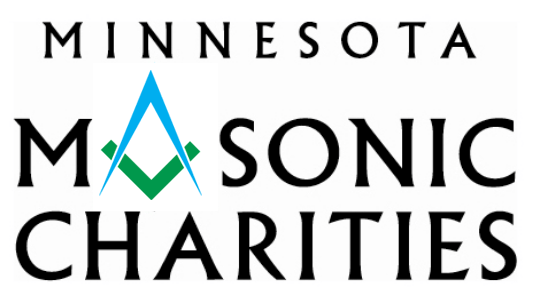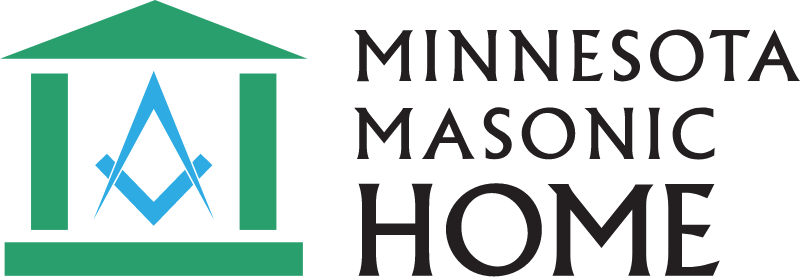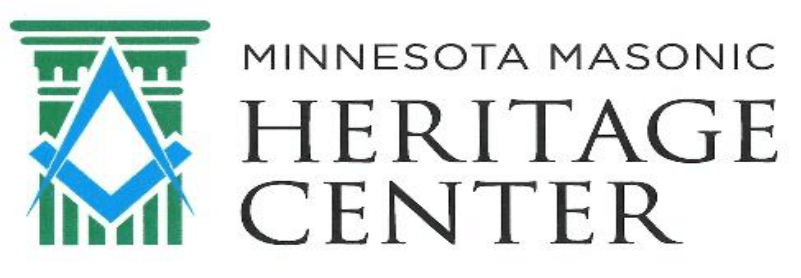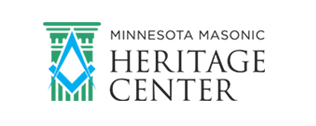A Seventh-Generation Visitor
August 14, 2019
May 14, 2019 was a typical day at the Minnesota Masonic Heritage Center (MMHC). Flowers were in bloom on the campus grounds; spring was scheduled for 2:00–5:00 p.m., after which summer would immediately commence. Typical, that is, until a particular phone call.
After exchanging the usual pleasantries, the caller asked, “Your museum is about Freemasonry, is that right? Do you know anything about A.T.C. Pierson?”
“Yes; he’s the reason we have organized Freemasonry in Minnesota,” I replied. Then, silence. Followed by even more silence.
Finally, she replied, “I apologize for the long pause. I have chills up my spine. A.T.C. Pierson was my great, great, great, great grandfather. Might I come visit your museum?”
Later that day, I had the pleasure of meeting Andrea Rymill and her husband Russell. The Rymills had retired from work-a-day life in Washington state, and were traveling the roads of the United States. Their trip through Minnesota included a search for information of any kind about her forebear; Azariah Theodore Crane Pierson was a mystery, and a bare branch on the family tree.
The Rymills came to Bloomington after finding Pierson’s grave in St. Paul’s Oakland Cemetery. His monument stone helped them discover that “Father Pierson” was a prominent Freemason. Next was Andrea’s search for information about Minnesota Masonry, ultimately reaching me at MMHC.
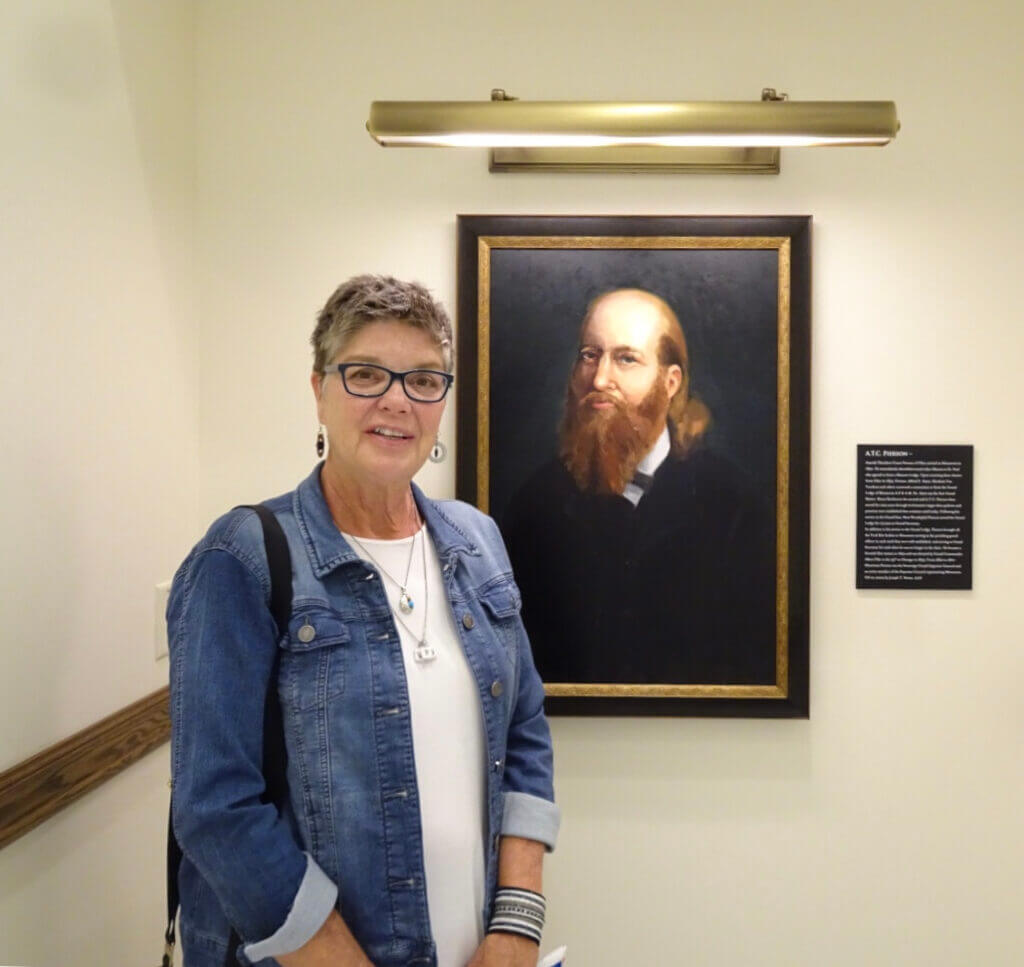
Andrea Rymill stands before a portrait of her fourth great-grandfather, A.T.C. Pierson.
While here, the Rymills learned that Brother Pierson was indeed a giant in Minnesota Masonry. Through his efforts, a Convention of local Masons was called, the outcome of which was the formation of the Grand Lodge of Minnesota. He served as Grand Master from 1856-1863, as Grand Secretary in 1864, and again in 1876 until his death in 1889. Pierson was also instrumental in establishing the York Rite, and later, the Scottish Rite in Minnesota. He also held national leadership positions in the General Grand Chapter of Royal Arch Masons, the Grand Encampment of Knights Templar, and the Southern Jurisdiction of the Ancient and Accepted Scottish Rite. Additionally, he was well known and respected as a Masonic scholar. A tribute to Past Grand Master Pierson was delivered at the 1890 Grand Lodge Annual Communication by then-Grand Master Jacob A. Kiester. He put it succinctly when he said, “As a Mason of long experience, of official services in every branch of Masonry, and of wide and varied learning, Brother Pierson had few equals and no superiors.” In today’s parlance, he was ‘kind of a big deal.’
I was happy to introduce Andrea to her fourth great-grandfather. We looked at photographs, signatures, an original printing of Pierson’s book, Traditions in Masonry, and its Coincidences with the Ancient Mysteries, as well as items from his personal library (the date range of his books is from the late-18th to the late-19th century). We talked about his influence in Freemasonry, and how he was the personification of a Renaissance Man in Minnesota’s pioneer days.
Finally, I gave Andrea and Russell an extensive tour of the Heritage Center, Minnesota Masonic Home’s Town Square, and a brief history of the 80-acre campus. None of which would be here today without the endeavors of our early leaders of Minnesota Masonry…especially Azariah Theodore Crane Pierson.
I’d be happy to give you a tour as well! Feel free to contact me to schedule a time of your convenience.
Photo: Andrea Rymill with the depiction of A.T.C. Pierson, in the Heritage Center Portrait Hall. (Painting by Joe Burns.)
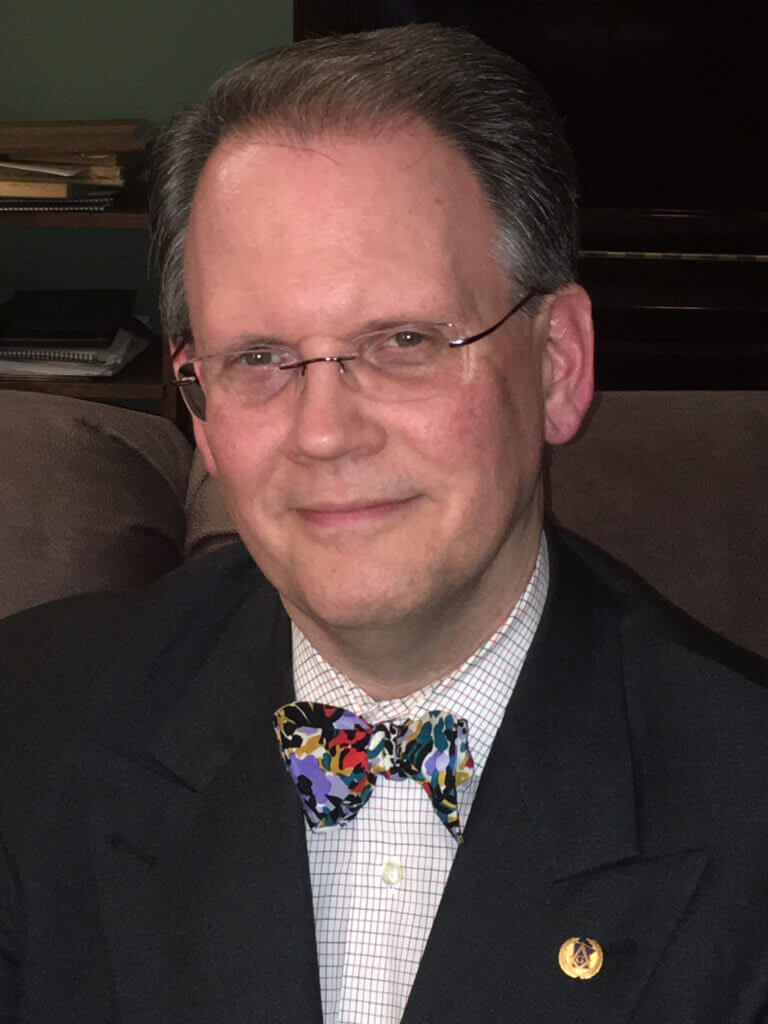
The author, Mark A. Anderson, is the Library and Museum Coordinator at the Minnesota Masonic Heritage Center, and the 2018 recipient of the national Duane E. Anderson Award for Excellence in Masonic Education. He has numerous Masonic honors, titles, letters, and insignia which he could list after his name, but he prefers to be known as Jeanette’s husband.
